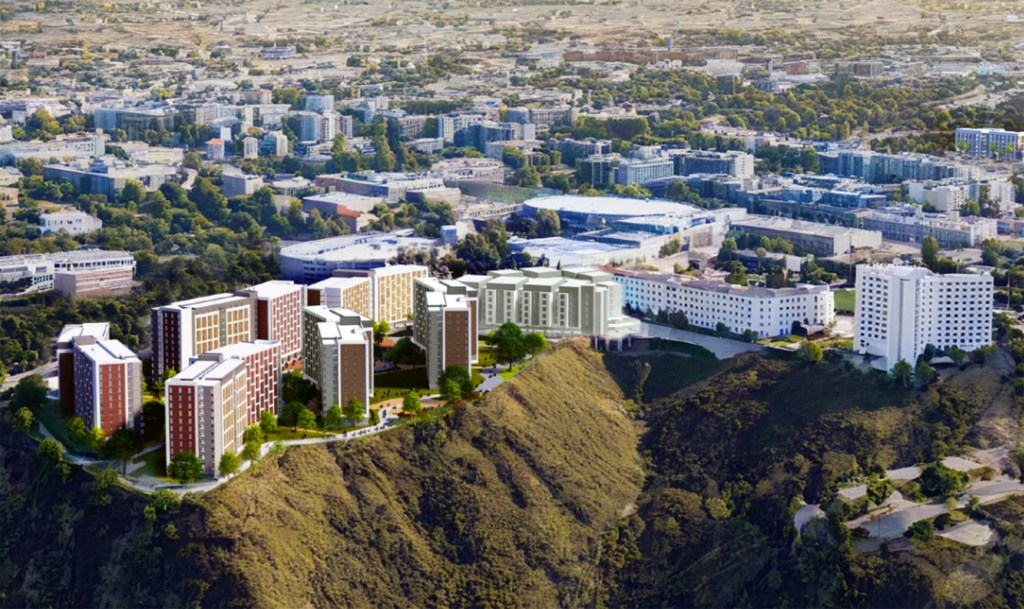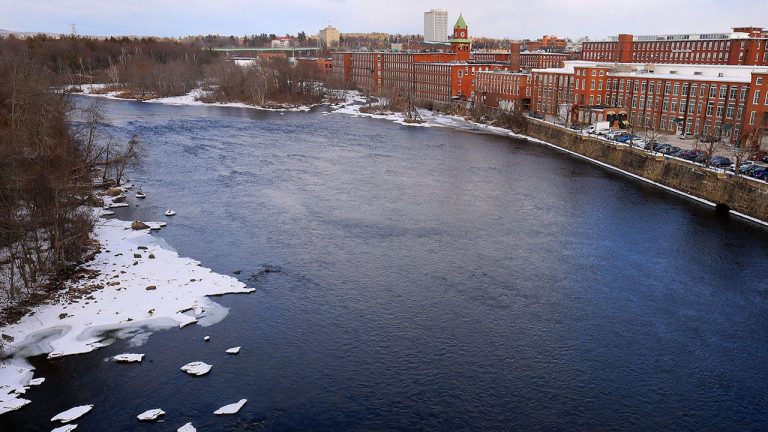

San Diego State University is pursuing the largest campus housing expansion in school history, proposing to build seven tall dorms that would accommodate 5,200 students in College Area, a neighborhood largely composed of suburban homes.
The multi-phase project, which could cost upward of $1 billion, would lift the school’s housing capacity to about 13,000, making it among the largest residential sites in the 23-campus California State University system.
The school says on its website the Evolve Student Housing plan “will meet the housing for first-year students and sophomores, as well as upper-division students by increasing the number of rooms available to accommodate diverse student housing preferences and needs.”
SDSU added in an email to the Union-Tribune: “Importantly, this project is not designed to drive student enrollments, but to fulfill demands for student housing. The project is a necessary response to the region’s housing crisis and student demand and will provide students with financially accessible and sustainable housing options.”
Many students currently rent all or part of privately-owned homes in College Area, an arrangement that has caused many problems over the years. Neighbors frequently complain to San Diego Police and the university about loud parties, especially those coming from dwellings used by fraternities and sororities. There also are serious parking issues.
SDSU is following the lead of UC San Diego, which has been on a tear in recent years, rapidly building high-rise dorms on campus to help students who can’t find affordable lodging in La Jolla’s super-heated rental market.
In September, UCSD debuted Pepper Canyon West, which has one tower than is 23 stories tall and a second that is 22 stories. It’s among the large student housing villages in the United States. UCSD now houses 22,000 students, second nationwide only to UCLA, which houses 24,000.
The new SDSU proposal is not as big, but is still quite ambitious.
The school wants to create a village called Peninsula, which would be composed of one nine-story building and five buildings that rise 13 stories, according to an environmental impact report that SDSU prepared for the CSU Board of Trustees. Peninsula would occupy a 10.57-acre site on the northwest side of campus. Separately, the school would build a nine-story dorm on a 1.1-acre site of University Towers.
SDSU does not talk in detail about the landscape-changing high-rises in a public tutorial it has posted on its website.
The university would end up with about 5,200 new beds — but it would only gain a net increase of 4,450 because it will have to tear down lots of older, existing dorms on campus.
CSU trustees are scheduled to review the proposal in May. If the project is approved, SDSU will begin building the first phase of the project later this year and could have the entire enterprise finished by late 2030, the campus said.
“The detailed financing plan (for the project) is still in development but will follow a typical self support project model,” SDSU said in a statement. “It includes plans to issue revenue bonds and the debt service obligations will be met by revenue generated from the housing projects. Final financing details will be determined as the project moves through the approval process with the California State University Board of Trustees.”
To date, the proposed project has not generated widespread public opposition from the university’s neighbors or its alumni. But some have questioned the wisdom of placing a huge residential community in an area where wildfires can break out.
“The fast-moving brush fire that swept through the canyon off Montezuma Road near San Diego State University on Oct. 31 reminds us how fast disaster can strike,” Rene Kaprielian, a SDSU graduate, said in a column titled “Why is SDSU pushing high-density student housing in dangerous fire zone?” published in the Union-Tribune on Feb. 13. “It wasn’t just the fire, which came within 10 feet of homes on the canyon rim, but the chaos and hours-long traffic jams of residents trying to evacuate the area. If that fire had gotten further out of control and jumped to adjacent neighborhoods, people could have been trapped in their homes and cars and possibly died.”
SDSU addressed that point in an email to the Union-Tribune, saying, “The Evolve Student Housing project will feature Type I-B fire-resistant construction, new fire access roads, and a 100-foot fire buffer zone.”






